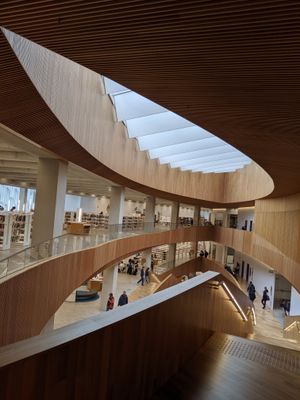There is an interesting discussion about how to make the catalog visible on the open web on Web4Lib at the moment, specifically on how users might find their way back from Google to library resources. A theme is that it is also important to make library resources visible in the course management system or campus portal.
At the same time, of course, we have seen growing discussion about a new catalog experience outside the integrated library system. See the NCSU catalog, for example, or Primo from Ex-Libris.
In each case, there is a separation of the discovery experience from the collection management function. This will make the need for an ILS service layer more pressing over time as we benefit from consistent ways of communicating between multiple discovery environments and the ILS.
It is also an interesting instance of a broader network trend. I recently came across the following in another context:
For most of the last 30 years, applications have dominated the design center. We architected solutions around applications, hey we even architected business processes around applications. Applications have been the center of the software universe and everything has revolved around them. However with the advent of firstly the Internet and secondly the Web Service standards a whole new thinking is starting to pervade. The radical thought is Copernican in nature. Applications are in fact just planets in a solar system. The real design center is the network and applications revolve around it. [Leadership | Commentary from Cape Clear’s CEO on ESB, SOA and Web Services]
We have been used to thinking about the catalog and the integrated library system as at the centre. But as more comes onto the network we are surrounded by many systems to help us do our research, learning and play. This is one reason why I think we have seen a gradual shift in focus over time from database to website to workflow.
And this means that it becomes more important to think about how library resource and functionality play well with the “real design center”, the network, and the multiple other network systems that consume the attention of library users. This suggests that we need good ways of solving the many to many issue within the search engines (how do you connect users to resources that they are authorized to use without cluttering the user experience with resources they are not authorized to use), and we believe that the developing OpenWorldCat program is one way of doing this. And it suggests that we need to make library resources more ‘service-able‘ in ways which facilitate their integration with user workflows and other applications.
Related entries:



